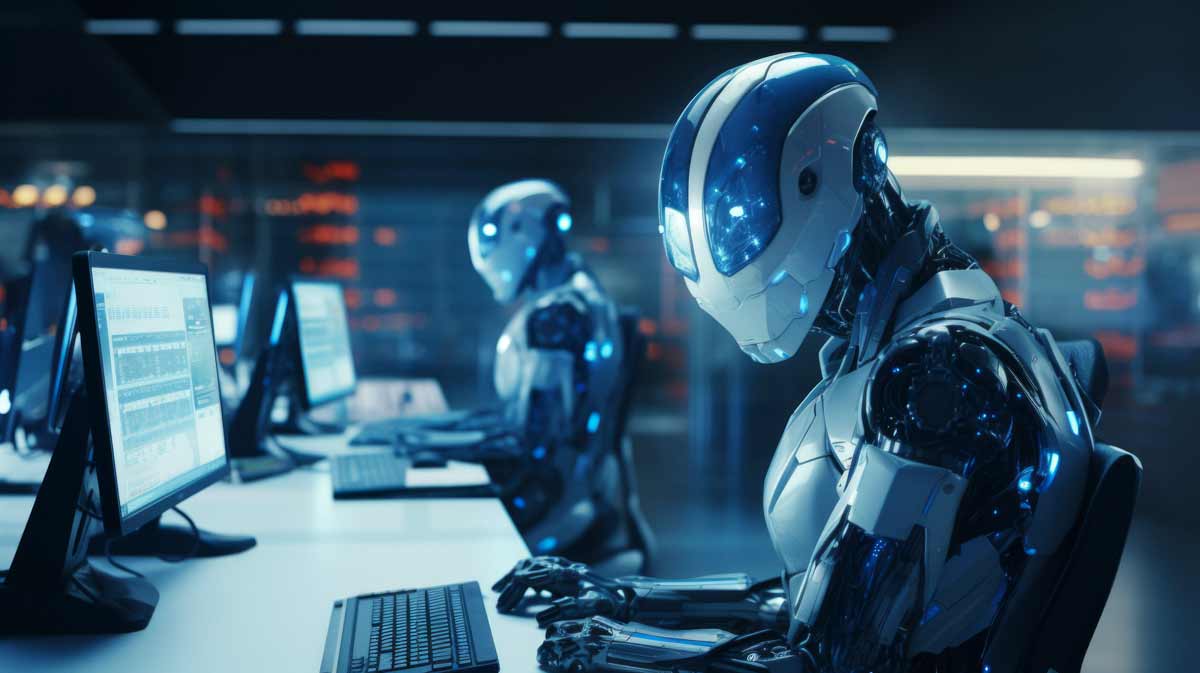Advanced Robotics: Unveiling the Future
Introduction
Advanced robotics has journeyed from basic mechanical arms conducting repetitive tasks to sophisticated, intelligent systems capable of decision-making and self-learning. The term “advanced robotics” epitomizes the fusion of cutting-edge technology, artificial intelligence, and machine learning into robotic systems, transforming them into dynamic, responsive, and highly capable entities. As we explore advanced robotics, we witness a thrilling convergence of science and technology, promising to revolutionize industries and redefine human abilities.

The Evolution of Advanced Robotics
The origins of robotics are humble, with early machines designed to execute monotonous, repetitive tasks in controlled environments such as factories. These early robots lacked intelligence and adaptability, performing tasks with rigid precision. However, the introduction of microprocessors and digital control systems marked a turning point. The combination of sensors, actuators, and computer control systems enabled the development of versatile robots. This marked the beginning of robots capable of perceiving and interacting with their surroundings, a significant leap in robotic capabilities.
Humanoid Robots: Emulating Human Movements
Humanoid robots are one of the most captivating advancements in robotics. Designed to resemble the human body, these robots possess intricate joints and actuators that mimic human movements. Beyond their physical resemblance, humanoid robots are being developed with advanced AI, allowing them to understand and replicate human behaviors. From assisting in healthcare to providing companionship, humanoid robots are set to become integral to our daily lives. Their ability to perform complex, human-like tasks with precision and adaptability highlights the remarkable progress in robotics technology.
Collaborative Robots (Cobots): Enhancing Productivity
Cobots, or collaborative robots, represent a revolutionary shift in human-robot interaction. Unlike traditional industrial robots that operate in isolation, cobots are designed to work alongside humans, boosting productivity and efficiency. They are equipped with advanced sensors and safety features, enabling them to operate safely near humans. Cobots handle mundane and repetitive tasks, freeing human workers to focus on more creative and complex activities. This harmonious collaboration between humans and robots is transforming industries, making workplaces safer and more efficient.
AI in Robotics: The Intelligence Engine
The integration of artificial intelligence into robotics has unlocked unprecedented possibilities. AI-powered robots can learn from their environment, adapt to new situations, and even predict outcomes. Machine learning algorithms enable robots to enhance their performance over time, making them more efficient and effective. In autonomous vehicles, for example, AI helps navigate complex environments, recognize obstacles, and make real-time decisions. The fusion of AI and robotics not only enhances robotic capabilities but also pushes the boundaries of possibility, leading to innovations that were once confined to science fiction.
The Ethics of Robotics: Navigating Moral Challenges
As robots become more integrated into society, ethical considerations become critical. Questions of robot autonomy, decision-making, and the impact on employment are significant issues that need addressing. There is an increasing need for ethical frameworks to guide the development and deployment of robots. Ensuring robots operate within human values and societal norms is essential. As we entrust robots with more responsibilities, from caregiving to critical decision-making, establishing clear ethical guidelines is crucial in mitigating potential risks and ensuring the advancement of robotics benefits humanity.
The Future of Advanced Robotics: What Lies Ahead?
The future of advanced robotics holds immense potential. As technology continues to evolve, robots will become even more integrated into various aspects of our lives. From healthcare and education to space exploration and disaster response, the applications of advanced robotics are limitless. Innovations such as soft robotics, using flexible materials for more adaptable and resilient robots, and swarm robotics, where multiple robots work together towards a common goal, are just glimpses of what lies ahead. The fusion of robotics with other emerging technologies like nanotechnology and biotechnology could lead to breakthroughs beyond our imagination.
Conclusion
Advanced robotics stands at the cutting edge of technological innovation, poised to transform industries and redefine human experience. The progression from simple mechanical devices to intelligent, adaptable systems is a testament to human ingenuity and relentless pursuit of progress. As we stand on the brink of a new era in robotics, the possibilities are boundless, and the future is incredibly promising. Embracing advancements in robotics with a mindful approach to ethical considerations will ensure we harness their full potential for the betterment of society.
